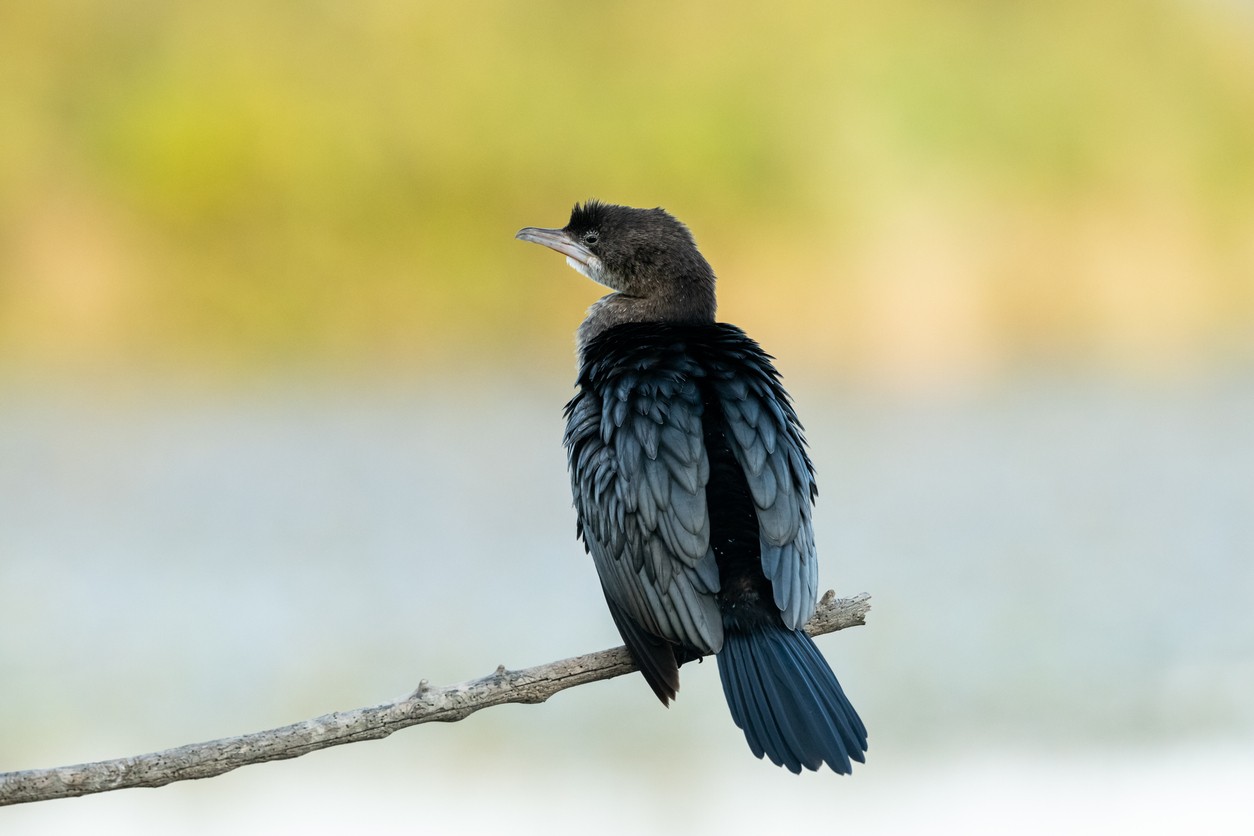Pygmy Cormorant
A species of Lesser Cormorants Scientific name : Microcarbo pygmaeus Genus : Lesser Cormorants
Pygmy Cormorant, A species of Lesser Cormorants
Botanical name: Microcarbo pygmaeus
Genus: Lesser Cormorants
Content
Description General Info

Description
The pygmy cormorant (Microcarbo pygmaeus) is a member of the Phalacrocoracidae (cormorant) family of seabirds. It breeds in south-eastern Europe and south-western Asia. It is partially migratory, with northern populations wintering further south, mostly within its breeding range. It is a rare migrant to western Europe. 
Size
55 cm
Colors
Brown
Black
Gray
Nest Placement
Tree
Feeding Habits
Pygmy Cormorant primarily eats fish, utilizing group hunting tactics. Between hunts, it rests in trees, exhibiting a distinct preference for arboreal perching.
Habitat
Pygmy cormorants like pools with plenty of vegetation, lakes and river deltas. They avoid mountainous and cold and dry areas. They love rice fields or other flooded areas where trees and shrubs can be found. During winter they also go to waters with higher salinity, in estuaries or on barrier lakes. These are birds who can live alone or in groups and they have adapted to human presence. They build nests from sticks and reeds in dense vegetation, in trees, shrubs, willows but occasionally in reeds on small floating islets. At the end of May, beginning of June, both parents incubate for 27–30 days, and nestlings become independent after 70 days. The young are fed by their parents with small fish and other aquatic animals. This bird frequently shares the same type of habitat with egrets, herons and spoonbills. 
Dite type
Piscivorous
General Info
Feeding Habits
Bird food type
Distribution Area
The pygmy cormorant occupies an area from the south-east of Europe (east of Italy) and the south-west of temperate Asia, east to Kazakhstan, Tajikistan, Turkmenistan, and Uzbekistan. The largest distribution is in south-east Europe, Albania, Greece, Bulgaria, Romania, the Balkan countries, Turkey, Cyprus, Iran, Iraq (namely the Tigris–Euphrates river system), Azerbaijan, Israel, Syria. In Romania, according to studies of Czech ornithologist Robert Ritter von Dombrowski, at the end of the 19th century, the pygmy cormorant was present in large colonies in the Danube Delta, Brăila and Ialomița Pond, on Vederoasa Lake (Constanța County), on certain pools and ponds with reeds and willows in Muntenia. The number of pygmy cormorant pairs was 10,000 without taking in account the breeding population of the Danube Delta. Populations of pygmy cormorant in Romania have dramatically declined, especially in 1960 when, due to the communist agricultural policies, the Great Brăila Island and important parts of Ialomiţa Pond were drained in order to practice agriculture, so the habitats of a great number of aquatic birds were destroyed. The pygmy cormorant can be found in the Danube Delta, Jijia Largă Pond (Iasi County), probably on Maţa, Rădeanu, Vădeni Ponds (in Galați County), Cârja Pond (Vaslui County), at Vlădeşti on Prut River (Galați County), on Calinovăţ Island from Caraș-Severin County, on Small Brăila Island, on Dunăreni Pond (Mârleanu, Constanța County), in Danubian Plain on Parches Pond-Somova (Tulcea County). At global scale, it was estimated that the entire population of pygmy cormorants is 85,000-180,000 individuals (a study effectuated by Wetlands International in 2006) and 74-94% of total population lives in Europe. The biggest colony is in the Danube Delta, numbering 4,000 pairs, but this seems certain to plunge due to a massive canalization scheme, which despite the protected status of the delta, commenced in May 2004. According to a study made by BirdLife International in 2004, it was estimated that population of pygmy cormorant in Romania was 11,500-14,000 pairs and during the winter 1,500-4,000 pairs. 


Scientific Classification
Phylum
Chordates Class
Birds Order
Gannets and Relatives Family
Cormorants Genus
Lesser Cormorants Species
Pygmy Cormorant